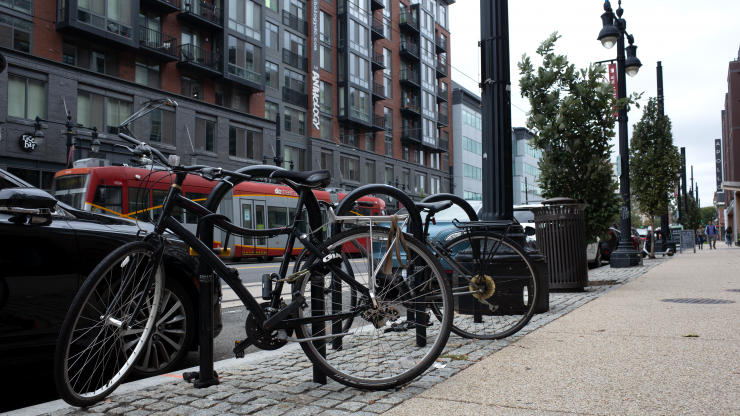Last month, the office of the D.C. Auditor announced the launch of a 10-month investigation into the District’s Vision Zero plan, which aims to eliminate traffic-related fatalities and serious injuries by the year 2024. With just two years until the project’s conclusion, Vision Zero’s end goal seems impossibly distant. Since the effort’s launch in 2015, traffic fatalities in the District have risen every year, with the exception of 2019.
Residents of D.C.’s H Street NE neighborhood have seen firsthand the shortcomings of Vision Zero. Keya Chatterjee, ANC Commissioner for 6A01, called the effort a “total failure.”
“So far, the D.C. government has failed to take [Vision Zero] seriously and the numbers show that that is the case,” she said. “People are dying on our streets.”
Just last year, the District saw 37 traffic fatalities – the highest number since the Vision Zero effort began. So far in 2021, there have been 30 traffic fatalities and recent data from the Metropolitan Police Department suggests the final 2021 number may surpass the 2020 record.
Chatterjee said she’s grown accustomed to seeing cars that have crashed and flipped over on the sidewalks and roadways of the H Street NE neighborhood. During the COVID-19 pandemic, she said the problem worsened.
“We had a three or four-month period where we were having a driver crash into a building on H street every few weeks. One of those was at Joy of Motion dance studio, and if it had not been during COVID, it would have been a mass casualty event,” she said. “The driver drove straight through a dance studio that usually is full of children taking dance lessons.”
Staff from @AtlasPACDC is on the scene this evening helping to secure the building. The car drove through the Marley studio window & also damaged the actor’s lobby.
Donate to Atlas here: https://t.co/0gzzTup5KX
Donate to Joy of Motion here: https://t.co/FCCmw0zCCb#hstreetne pic.twitter.com/HtC1gi4ZO1
— Joy of Motion Dance Center (@JOMDC) December 23, 2020
The issues that Chatterjee is most concerned about on H Street NE are the exact problems that Vision Zero was designed to prevent.
D.C.’s Vision Zero plan is modeled after a 1997 Swedish plan by the same name that saw a level of success in Swedish cities that remains to be seen in the District.
When the plan launched six years ago, D.C. Mayor Muriel Bowser announced four key areas of focus: data, enforcement, education and engineering. The Vision Zero website states, this combined approach is necessary because “infrastructure alone will not reduce fatalities and serious injuries to zero.”
Since 2015, Mayor Bowser and the District Department of Transportation (DDOT) have implemented measures to increase safety for pedestrians, bicyclists and drivers – from high tech crosswalks to expanded bike lanes and safer dual-turn lanes. But it hasn’t been enough to make a dent in the number of serious injuries and fatalities.
While traffic fatalities and injuries have increased across the District, the highest concentration has been in Wards 7 and 8. Most recently, On Oct. 6 in Ward 8, two school children and their father were struck by a car while crossing their street on their way to school on National Walk to School day.
Loren Copsey co-owns a bike shop along H Street NE, The Daily Rider. He told The Wash Vision Zero is “little more than a hashtag” or “a thing you can put on a bus shelter or the side of a metro bus.”
He said the failings of Vision Zero are evident in the comments he hears from his clients.
“Their biggest fear is being struck by a car or being struck by a car while they have their child on the back of their bike,” Copsey said.
According to Mark Eckenwiler, ANC commissioner for 6C04, it’s no wonder cyclists are intimidated on D.C.’s roadways.
“It’s bad out there, and anybody who walks around any part of this city for any amount of time sees that,” he said.
Eckenwiler has worked for years to bring traffic-calming measures to H Street NE.
In February 2020, Eckenwiler, Chatterjee and other ANC commissioners sent a letter to DDOT listing dangerous intersections on H Street NE and requesting specific solutions, including turn lanes, bulbouts, signaled turn arrows, and protected bike lanes.
According to a letter shared with The Wash, Everett Lott, Interim Director of DDOT, responded to the commissioners’ letter 19 months later, rejecting some requests and promising to conduct studies for others.
For Chatterjee, this type of lag in response time is a symbol of Vision Zero’s failings. “It’s unbelievably slow to get tiny, tiny pieces of incrementalism that are completely inadequate for the task of saving lives,” she said.
The Wash reached out to DDOT for a comment about this complaint, but did not receive a response. However, Mayor Bowser held a press conference this morning addressing the issue.
“The work to make our roads and sidewalks safer is urgent,” Mayor Bowser said. “In addition to accelerating safety improvement projects citywide, residents deserve a faster process for having dangerous conditions on our roads and sidewalks addressed. We can and will move faster, and implementing a streamlined, less bureaucratic process is the first step in making that happen.”
Eckenwiler isn’t hopeful that the audit of Vision Zero will lead to much change, but he thinks the D.C. Council’s confirmation hearing for Lott later this month could be the right venue to voice concerns.
He said the confirmation hearing is “a clarion call for everyone in the district who thinks that things need to get better in a hurry on our roadways.”
Until then, he’ll continue using the only real power he said he has as an ANC member, “that of the bully pulpit,” but according to Eckenwiler, “it’s not a very tall pulpit.”
















Add comment